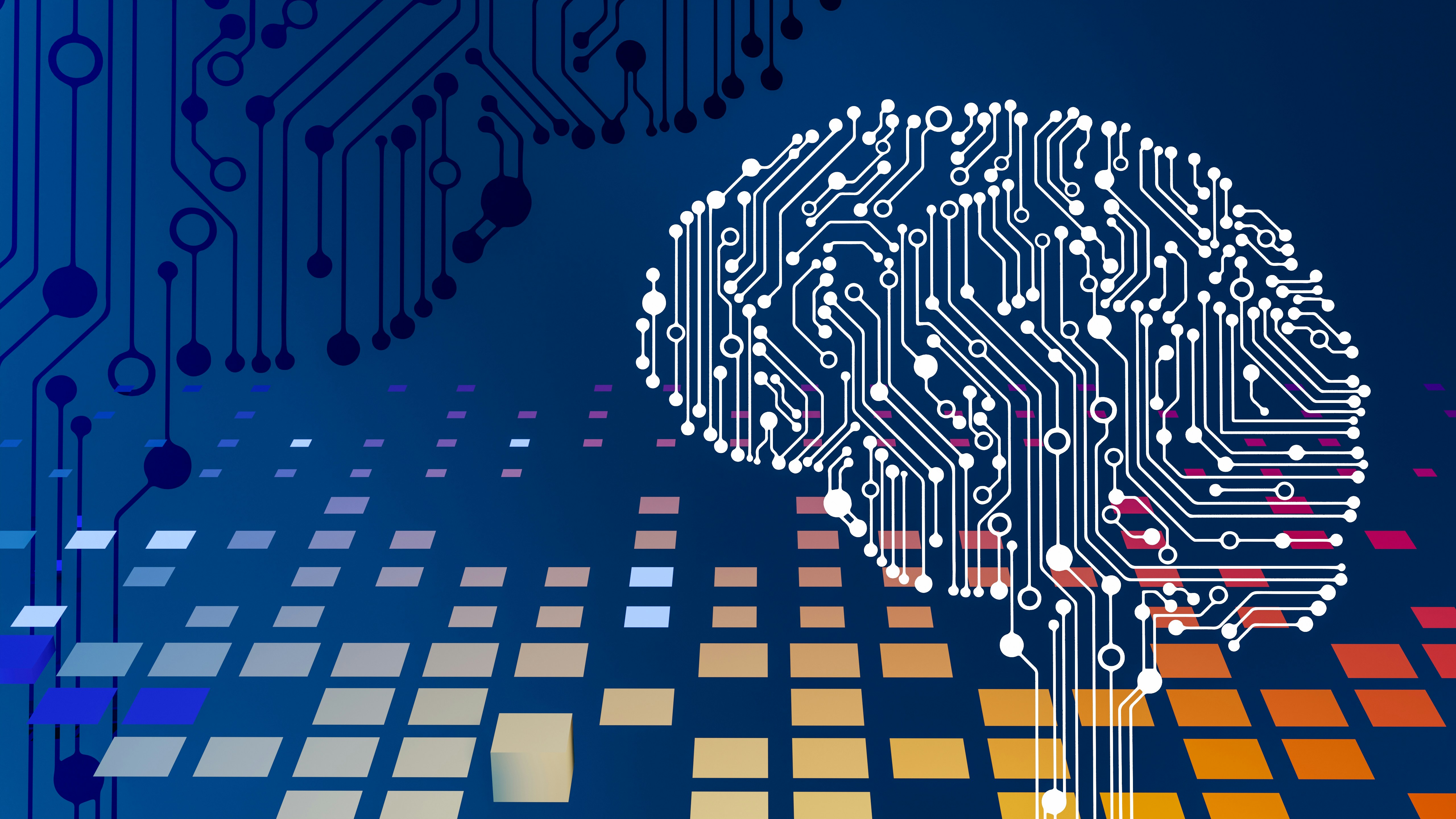Top 15 Generative AI Coding Tools to Transform Your Coding Workflow
Are you fascinated by the power of generative AI coding to transform software development entirely? Let's delve into how AI Copilots are revolutionizing the way we code, unlocking creativity, optimizing efficiency, and enhancing productivity. Dive into the world of generative AI coding, and discover the future of coding!
What Is Generative AI & Its Uses in Coding

At a high level, generative AI refers to a category of AI models and tools designed to create new content, such as text, images, videos, music, or code. Generative AI uses a variety of techniques—including neural networks and deep learning algorithms—to identify patterns and generate new outcomes based on them. Organizations and people (including software developers and engineers) are increasingly looking to generative AI tools to create content, code, images, and more.
Practical Uses of Generative AI in Coding
1. Code Generation
Writing code with generative AI is possible through a technique known as neural code generation. This involves training a neural network on a large dataset of computer code examples and then using the fine-tuned network to generate code that is similar in structure and function to the examples it has been trained on.
2. Code Completion
One of the most straightforward uses of generative AI for coding is to suggest code completions as developers type. This can save time and reduce errors, especially for repetitive or tedious tasks.
3. Code Review
Generative artificial intelligence can also be used to make the quality checks of the existing code and optimize it either by suggesting improvements or by generating alternative implementations that are more efficient or easier to read.
4. Bug Fixing
It can help identify and fix bugs in the generated code by analyzing code patterns, identifying potential problems, and suggesting fixes.
5. Code Refactoring
It can be used to automate the process of refactoring code, making it easier to maintain and update over time.
6. Style Improvement
It can analyze code for adherence to coding style guidelines, ensuring consistency and readability across a codebase.
Generative AI in Testing
Testing is critical in software, and generative AI can support testing in a similar way to its support for software coding. Generative AI applications in test automation and testing include:
- Generating test cases
- Generating test code
- Test script maintenance
- Test data generation
- Test documentation
- Test result analysis
Seamless AI Integration Across MacOS
Imagine an AI that can type anywhere on macOS, with full context of what's on your screen. Imagine if, your email wrote itself, your terminal was fluent in Bash, your team updates became effortless. You don’t have to imagine any of this anymore. You can download Omnipilot’s MacOS AI Copilot for free right now and use AI anywhere on MacOS! Try our free AI copilot today — just head to omnipilot.ai and enter your email, and you’ll be able to download our MacOS app in seconds!
Let Omnipilot make your life easier.
Related Reading
How Does Generative AI Work in Coding?

Data collection and training play a crucial role in the development of generative AI models. To create these models, large datasets are required to train the neural networks effectively. These large datasets can be sourced from various platforms, such as open-source code repositories, documentation, and technical articles.
During the training phase, the neural networks adjust their weights and parameters to minimize the difference between the predicted and desired outputs. As a result, the network learns from its mistakes and makes more accurate predictions based on the data.
The Main Generative AI Model Architectures
Generative AI models use different architectures to generate code and other forms of data. The primary model architectures include:
1. Large Language Models (LLMs)
These models process and generate natural language text. They are trained on vast amounts of text data from books, websites, and social media posts to predict and generate natural language responses effectively. LLMs find practical applications in virtual assistants, chatbots, and text generators like ChatGPT .
2. Generative Adversarial Networks (GANs)
GANs leverage two different neural networks – a generator and a discriminator. The generator creates new data, such as images or audio, from random noise, while the discriminator distinguishes between real data and generated data. During training, the generator aims to produce data that fools the discriminator, resulting in high-quality generated data.
3. Transformer-Based Models
These models excel at understanding context and relationships in sequential data, making them ideal for natural language processing tasks like machine translation and language modeling. Popular transformer-based models like GPT-4 have been adapted for various sequential data tasks, including image recognition.
4. Variational Autoencoder Models (VAEs)
VAEs consist of encoders and decoders and can compress large datasets into a smaller representation. This compression enables the generation of new data similar to the original dataset. VAEs are often used for image, video, and audio generation and can create entirely new portraits of people by training on datasets like CelebA.
Each of these model architectures contributes uniquely to the generation of relevant code and data in response to user prompts.
Top 15 Generative AI Coding Tools for Software Development

1. Omnipilot
Omnipilot is a MacOS AI Copilot tool that can type anywhere on macOS with a full understanding of the context on your screen. It can help write emails, improve terminal usage, and streamline team updates, enhancing productivity and efficiency for MacOS users.
You can download Omnipilot’s MacOS AI Copilot for free and use AI across MacOS.
2. GitHub Copilot
GitHub Copilot, developed in conjunction with OpenAI, is an AI-powered code suggestion and generation tool. Using machine learning models trained on vast public code repositories, it suggests code snippets and even entire functions as developers type, enhancing coding speed and accuracy.
3. ChatGPT
ChatGPT, developed by OpenAI, is an AI model that generates text in natural language, including code snippets, when prompted. Though not primarily aimed at code generation, it can be trained on code examples to provide syntactically correct and functionally valid code snippets. The quality of generated code may vary based on the training data and task complexity.
4. CodeWhisperer
CodeWhisperer, an Amazon tool, generates code mimicking a developer's style and patterns by analyzing natural language comments. It offers suggestions while typing to complete comments and produces code aligned with the developer’s objectives. Users can accept suggestions or continue writing their own code.
5. IBM Watson Code Assistant
IBM’s Watson Code Assistant, leveraging the Watson AI infrastructure, generates code. Although not publicly available yet, it highlights the potential for AI in code generation.
6. Code Llama
Code Llama by Meta comes in various versions for multiple programming languages, including Python. It offers improved comprehension through natural language instructions, aiding developers in writing code efficiently.
7. Google Gemini
Google’s Gemini, previously Bard, supports 20 programming languages and generates code based on user prompts and comments. It assists in explaining pasted code and refactoring existing code, enhancing coding practices.
8. Auto-GPT
Auto-GPT is a robust AI tool that operates using multiple GPT instances managed by a top-level instance. It breaks tasks into subtasks, allocating these to additional GPT instances, enabling the handling of complex coding jobs.
9. Tabnine
Tabnine uses OpenAI Codex to suggest code and auto-complete code lines or functions, adapting to the existing codebase style. It is available across a wider range of apps than other tools, enhancing accessibility for developers.
10. CodeWP
CodeWP is designed for WordPress developers, generating PHP, Javascript, and jQuery code compatible with WordPress and its plugins. It is actively developed, with new features being regularly added.
11. CodeSquire
CodeSquire offers an AI coding assistant via a Chrome Extension for apps like Google Colab and BigQuery. It supports writing structured query language (SQL) requests , turning comments into code, and completing lines or generating new functions intelligently.
12. AI Query
AI Query simplifies writing database queries by translating plain English into SQL queries and vice versa. It supports various database engines, with the advantage of defining a project-specific database structure for tailored code generation.
13. Codegen
Codegen, a model by Anthropic, can generate, explain, and translate code across multiple programming languages. It adheres to AI principles for safe and ethical behavior, assisting with tasks like function writing and bug fixing.
14. CodeAlpaca
CodeAlpaca integrates with popular IDEs to suggest, complete, and explain code across multiple programming languages. Built on OpenAI's Codex model, it learns from the developer's coding style to provide tailored suggestions.
15. StarCoder
StarCoder, also by Anthropic, generates, explains, and translates code, supporting various programming languages. It aligns with Anthropic's AI principles for ethical behavior and aids in tasks like function writing and bug fixing.
Related Reading
- Generative Ai For Software Development
- How To Improve Developer Productivity
- Ai Code Generation
- Ai Assisted Coding
- Chat Gpt Alternative For Coding
- How To Use Ai To Write Code
- Ai Code Completion
- Code Generation
- Automation Tools For Developers
- Swift Code Generator
- Copilot For Mac
- Top Competitor To Amazon Codewhisperer
- Codeium Vs Github Copilot
- Github Copilot Swift
- Github Copilot Xcode
- Ai Code Optimization
- Code Whisperer Vs Copilot
- Ai Coding Tools
11 Best Practices for Efficient Generative AI Coding

1. Importance of Smaller AI Models for Coding
I highly recommend that developers explore smaller, more specialized language models for AI assistance in coding instead of solely relying on mainstream large language models like GPT-4. These smaller models are designed specifically for coding tasks and have been found to outperform larger models in terms of the quality and relevance of results. Integrating smaller AI models into the coding process can result in more tailored and reliable code generation, reducing the risk of using copyrighted code or encountering trust issues related to data sourcing.
2. Adequate AI Tool Selection for Coding Tasks
While generative AI tools like ChatGPT can accelerate coding processes, they should not be viewed as substitutes for human programmers. It is crucial to select AI tools that are best suited for specific coding tasks based on their capabilities and functionality. Developers must still exercise caution and review each line of code generated by AI, ensuring it aligns with established coding standards and best practices.
3. Encapsulation of AI-Generated Code
Encapsulating AI-generated code into defined modules or functions enhances code readability and usability. This practice involves wrapping code within higher-level structures like functions or classes, allowing for the easy invocation and interaction of the encapsulated code as a cohesive unit. Encapsulation promotes modular design and facilitates code reuse across different parts of a program or other projects.
4. Thorough Documentation of AI Usage
Documenting the usage of AI-generated code in coding projects is essential for transparency, reproducibility, and maintenance. Proper documentation enables team members, stakeholders, and future developers to understand how AI models are integrated into the codebase and aids in replicating the AI model generation process. Thorough documentation also facilitates troubleshooting, knowledge transfer, and the identification of areas for improvement within the code.
5. Alignment of AI Tools with Coding Standards
Providing AI coding assistants with information about coding standards, style preferences, and project-specific guidelines helps tailor the generated code to match the organization's coding practices. Equipping AI tools with knowledge of the desired coding rules before code generation can result in code that adheres to established coding standards, reducing the need for extensive rework later on.
6. Creation of Specific and Detailed Prompts
Crafting specific and contextual prompts for AI tools enhances their understanding of coding requirements and constraints. Detailed prompts help AI tools generate code that closely aligns with the developer's needs, enabling more accurate and relevant code generation. Developers should clearly articulate their coding requirements, including specific libraries, frameworks, or limitations, to guide the AI tools effectively.
7. Thorough Review and Testing of AI-Generated Code
Developers should avoid blindly copying and pasting AI-generated code without comprehending its functionality. Thoroughly reviewing and testing the code ensures that it integrates seamlessly with the project and meets specific requirements. Adjustments may be necessary to align the generated code with coding standards, performance considerations, and project-specific nuances. Utilizing static code analysis and code reviews can help ensure the quality and integrity of AI-generated code.
8. Restriction of Access to Private Data
Ensuring that AI tools have restricted access to private and sensitive data is crucial to safeguarding intellectual property and data security. Establishing company-wide policies that prohibit AI tools from accessing restricted data can prevent unauthorized data exposure. Developers should implement checks before and after allowing AI tools to interact with the code to mitigate potential security risks.
9. Understanding the Risks of Prompt Injections
Developers must be aware of security risks associated with AI tools, such as prompt injections, which can compromise application security. Prompt injections involve administering specific instructions or queries to influence AI model behavior, potentially leading to insecure coding recommendations. Security teams should closely monitor AI tools for any signs of compromise or malicious activity to prevent prompt injections and other security vulnerabilities.
10. Implementation of Proper Secrets Management
Proper secrets management is critical in software development to protect sensitive credentials and ensure secure access to software data and systems. Developers should securely store and encrypt secrets to prevent accidental disclosure or theft of sensitive information. Automated code analysis tools with secrets detection capabilities can help identify and mitigate security risks related to secrets management in AI-generated code.
11. Review of Suggested Third-Party Dependencies
Incorporating third-party dependencies recommended by AI tools requires careful evaluation to ensure the dependencies are from trusted sources and do not pose security risks. Developers should thoroughly review third-party dependencies before integration, checking for credibility, maintenance status, and potential security vulnerabilities. Automated tools for detecting insecure dependencies can help identify and address security issues before deploying code with third-party dependencies.
Related Reading
- Best AI code Generator
- Copilot Alternatives
- Best AI coding Assistant
- Copilot Vs Code
- Codegpt Vscode
- Tabnine Alternative
- Replit Ghostwriter Vs Copilot
- Sourcegraph Alternatives
- Openai Codex Alternative
Try Our MacOS AI Copilot for Free Today
Talking about Omnipilot is like discussing a breakthrough in the world of generative AI coding. This innovative technology tool enables you to have an AI assistant right at your fingertips, ready to help you with any task on your MacOS. Imagine how easy your life will become when you can sit back and let AI write your emails, manage your terminal commands, and streamline your project updates. The power of Omnipilot lies in its ability to understand the context of your screen, providing you with accurate and efficient assistance in any task.
By downloading Omnipilot's MacOS AI Copilot, you can access this incredible AI tool for free, giving you the opportunity to experience the benefits of generative AI coding firsthand. To get started, simply visit omnipilot.ai, enter your email, and download the MacOS app within seconds.
Let Omnipilot take the wheel and make your life easier by simplifying the way you work on your MacOS device.
